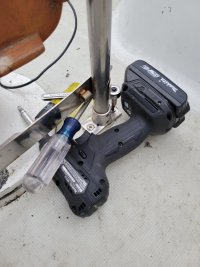reginaldobaker
Member II
Anyone have tips on how to loosen or tighten a through bolt solo? The nut will start to spin the bolt at a certain point and it risks messing up sealant/butyl waterproofing.
Run into this problem a lot with boats (and recently when installing an air vent onto my truck canopy) - the nut needs to be turned on a through bolt but one person isn't able to reach both sides.
It's ideal to have a second person but this isn't always possible.
One way that works alright for me (when Installing a new through bolt and selecting new hardware) is to use about an inch longer bolt than necessary. I'll be able to keep the bolt from turning with a visegrip while tightening up the nut on the same side. The downside is this can bugger up the threads and make removal difficult.
Any thoughts at all?
Run into this problem a lot with boats (and recently when installing an air vent onto my truck canopy) - the nut needs to be turned on a through bolt but one person isn't able to reach both sides.
It's ideal to have a second person but this isn't always possible.
One way that works alright for me (when Installing a new through bolt and selecting new hardware) is to use about an inch longer bolt than necessary. I'll be able to keep the bolt from turning with a visegrip while tightening up the nut on the same side. The downside is this can bugger up the threads and make removal difficult.
Any thoughts at all?

